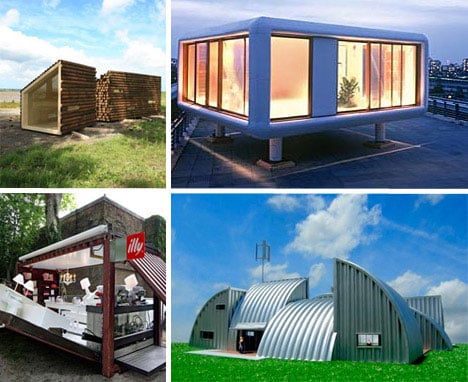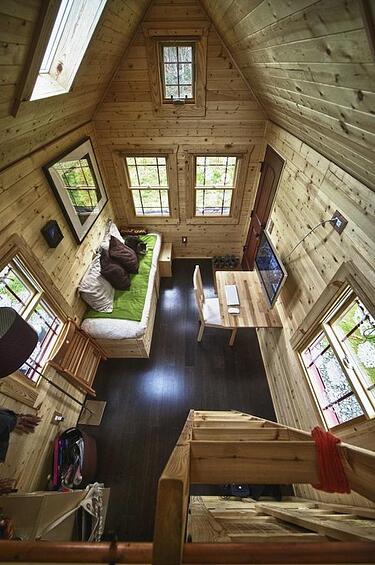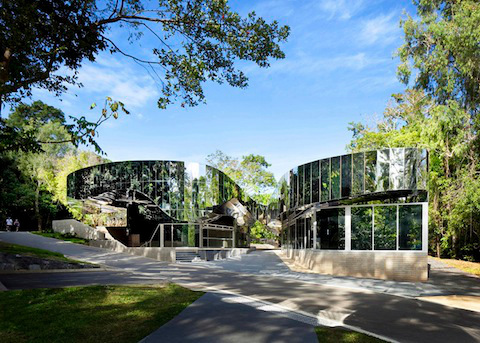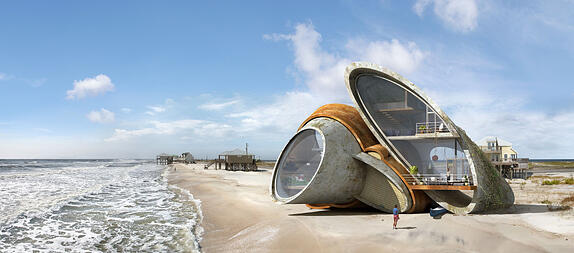4000 years ago, every king wanted a pyramid. 500 years ago, the king was chomping at the bit for a castle. Now, he’s just as likely to be asking for a modernist glass cube or a forest cabin made from sustainable concrete. When it comes to architecture, there’s just no accounting for taste … or for trends.
Although many architectural trends are timeless, there’s definitely a fresh set of ideas and themes fading in and out of popularity every year. In this article, we take a look at what we think some of the emerging trends in architecture are.
Trend 1: If You Can Build It, You Can Pre-Fab It

Image from Weburbanist.
In many of the larger cities in the world, populations are increasing faster than the city’s ability to house those people. In my own city, Auckland, economists estimate that some 100,000 houses are needed in the next three years in order to simply tread water with growth trends. But who is going to build all these houses, and how long is the process going to take? After all, these buildings are needed now.
Prefabricated building techniques have been used in Europe for decades to enable simple, high-quality housing to be put up quickly. Now, the technology is slowly being adopted across the world. All parts of the building are made as a kitset in a factory - including windows and roofing - and these can be transported to site and made into a watertight shell within a matter of hours. As houses can be ordered in bulk, the price can remain low for a high-spec build, ensuring housing remains affordable in growing urban centres.
Check out all the possibilities of prefabricated design on Weburbanist, with: Prefabulous Buildings: 10 Fantastic Prefabricated Houses.
Trend 2: 3D Printed Details & Interiors
The benefits and potential of 3D printing is only beginning to be explored by architects, but there’s definite potential there to create new and unique structures using this technology. In 2015 I believe we’re going to see more designers using 3D printing to push the boundaries of architecture.
For example, a Chinese company is using 3D printing to demonstrate how the technology can be applied to sustainable building practices by printing and framing up 10 houses in a day. These larger-scale 3D printers don’t use plastic, but instead a mixture of recycled glass fiber and scrap concrete.
Check out Digital Grotesque - an amazing 3D-printed interior designed by Michael Hansmeyer and Benjamin Dillenburger, that includes a beautiful, intricate ornamental cube that looks like something from a science fiction film.
Trend 3: Small Space Cleverness and Form = Function

Image from Tiny House Blog.
In 2015, many people are downsizing and trying to squeeze their lives into smaller spaces. It’s a way of putting less time into cleaning a building and more time enjoying it! Design is shaping the trend toward highly functional spaces - details of rooms and furniture that include clever storage ideas and architectural details that not only look fantastic, but perform a function within the space. Details like sinks and taps are becoming architectural statements, and whole rooms can transform to serve dual purposes.
For the best in small building design, I love the Tiny House Blog.
Trend 4: “Invisible” Architecture

Image from Flavorwire.
As the busy modern world increasingly encroaches upon private, quiet spaces, more people are seeking a way to create a space that physically disappears from its surroundings. Architects are increasingly using camouflaging materials or mirrors to create buildings that completely disappear in their surroundings.
Check out Flavorwire’s post on 15 Amazing Examples of Invisible Architecture. My favourite is the Swedish treehouse hotel hidden in the sky.
Trend 5: Disaster-Proof Buildings

Image from Huffington Post
With global warming, climate change and other extreme natural phenomena being at the forefront of scientific and political debate, it’s no surprise that architects are responding to these threats with innovative ideas to keep buildings - and their inhabitants - safe. From self-sustaining buildings to state-of-the-art earthquake protection, architects are at the forefront of a more self-aware world.
As one extreme example, have a look at these bulbous designs by Dionisis Gonzalez - structurally whimsical and sustainably sound, they are designed to withstand the extreme and often catastrophic conditions on Dauphin Island (in the Gulf of Mexico).
What architectural and design trends do you see being big in 2015?






